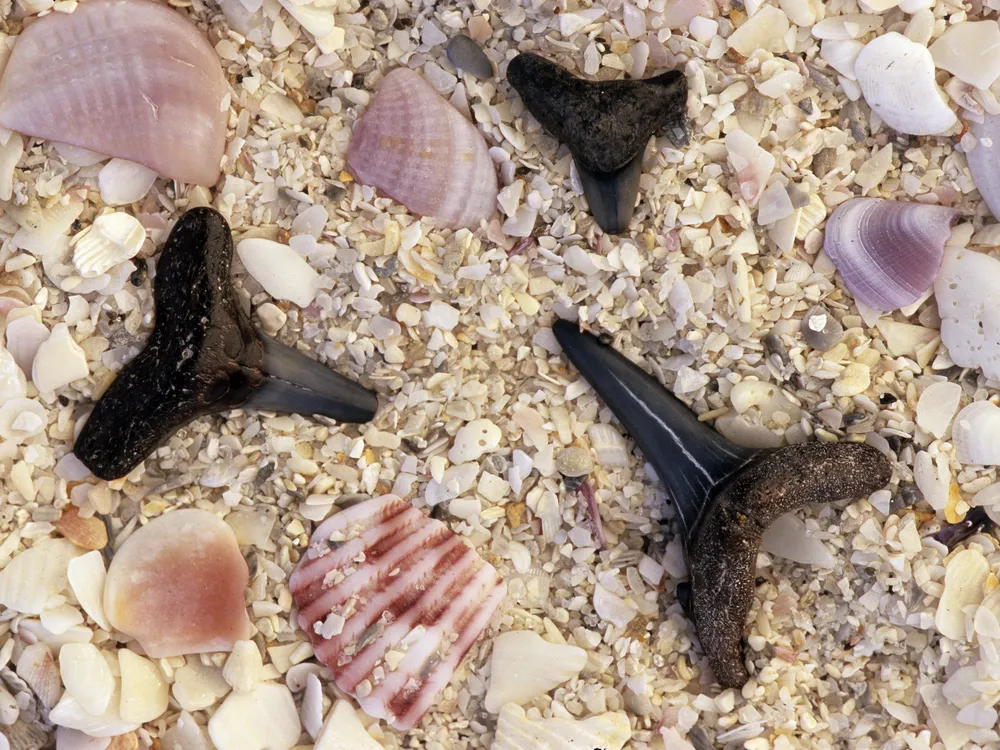Fossil teeth are quite abundant in Southwest Florida.
Ed Reschke/Getty Images
Shark teeth are often considered the most common vertebrate fossils in the world, and for good reason. Each individual shark has rows upon rows of chompers that fall out and get replaced in conveyor belt-like fashion. A single shark can lose approximately one tooth per week.
Considering the fact that sharks have swum the world’s seas for more than 400 million years, the animals have left behind an extensive fossil record. Today, their preserved teeth, which tend to have a dark color, can be found in the sediments of rivers, along coastlines or even on the side of the road, depending on where you are.
“If you can find one in one location, you will certainly find more,” says Fred Mazza, president of the fossil tour company Paleo Discoveries in Florida. “They’re not all large, large teeth. A lot of them just naturally fall into a size range from half an inch to one inch. But they’re not rare to find at all.”
Teeth are the only widely available record of prehistoric sharks, since the cartilaginous bodies of the predatory fish do not preserve easily. If scientists want to learn about the sharks’ anatomy, diet or ecology, they have to get clues from teeth.
Sora Kim, a geochemist and shark tooth researcher at the University of California, Merced, studies the chemical elements in fossilized shark teeth to unravel some of the mysteries about the life history of these animals. Last year, her team reported a shocking discovery: that the megalodon, the giant extinct shark considered to be the largest fish that ever lived, may have been warm-blooded like mammals.
Today, more than one-third of shark and ray species are threatened with extinction, largely due to overfishing. But climate change is another threat—a study published this month found sharks are abandoning stressed coral reefs as oceans warm.
According to Kim, studying sharks of the past could provide clues to how modern sharks will fare under climate change. During the Eocene epoch (roughly 33.9 million to 56 million years ago), oceans also warmed, and it’s often used as an analogue for what’s happening today. “How did the sharks cope?” she says. “How did they make it through mass extinction events, or climate warming or climate cooling? I think that…
Click Here to Read the Full Original Article at Travel | smithsonianmag.com…
